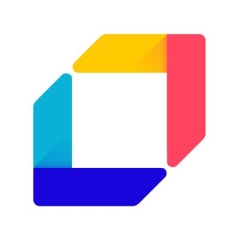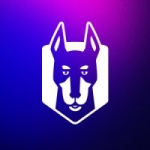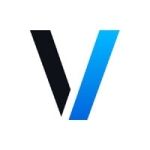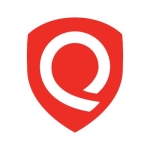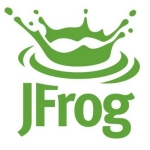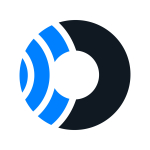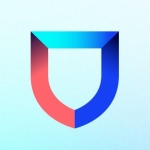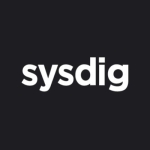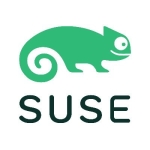
Vulnerability scanning integrates seamlessly across diverse development projects
Pros and Cons
- "Trivy's ability to scan files, images, GitHub repositories, Infrastructure as Code like Terraform, and Kubernetes is valuable."
What is our primary use case?
I use Trivy to scan code for vulnerabilities before deployment. Our projects, which are developed by different developers, involve various dependencies and third-party code. Before deployment, I scan the code to ensure there are no issues with the dependencies, files, or secrets.
What is most valuable?
Trivy's ability to scan files, images, GitHub repositories, Infrastructure as Code like Terraform, and Kubernetes is valuable. It allows output in various formats, enabling me to monitor and understand the code's state without reviewing it line by line. It identifies critical and minor issues effectively.
What needs improvement?
Trivy's marketing and awareness need improvement. Not everyone knows about it, which isn't ideal given its capabilities. There's potential to integrate AI and machine learning for enhanced functionality.
For how long have I used the solution?
I have used Trivy for around three years.
Buyer's Guide
Trivy
September 2025
Learn what your peers think about Trivy. Get advice and tips from experienced pros sharing their opinions. Updated: September 2025.
868,787 professionals have used our research since 2012.
What do I think about the stability of the solution?
Trivy is generally stable, especially when I use the second latest version. The latest version may have frequent changes, but the second latest version provides stability.
What do I think about the scalability of the solution?
Trivy scales well in scanning large amounts of data and images. In my microservices project running on Kubernetes, it regularly scans nearly one hundred images and more than one hundred thousand files daily.
How are customer service and support?
I primarily rely on documentation and the Trivy output for any issues. I haven't used online technical support.
How would you rate customer service and support?
Neutral
Which solution did I use previously and why did I switch?
In our CI/CD pipeline, we have used SonarQube for code scanning. Initially, we manually reviewed code to prevent vulnerabilities, like during the Log4j issue, where developers were instructed to avoid using vulnerable dependencies.
How was the initial setup?
Trivy's setup is straightforward. It's easily installed on different systems like Linux with APT, Docker images, or using Helm charts in Kubernetes.
What's my experience with pricing, setup cost, and licensing?
I use the open source version of Trivy, so there are no costs associated.
What other advice do I have?
I recommend Trivy to others due to its powerful and useful features. However, I suggest increasing its marketing to raise awareness. I rate Trivy an eight out of ten.
Disclosure: My company does not have a business relationship with this vendor other than being a customer.
Last updated: Apr 28, 2025
Flag as inappropriateFramework Engineer at a tech services company with 1,001-5,000 employees
Customize vulnerability scanning with ease and offers a straightforward setup process
Pros and Cons
- "It's customizable, allowing me to add any rules and format HTML templates as I wish."
- "One of the great features of Trivy is that it helps me scan items such as AWS credentials and GCP service accounts."
- "Trivy can improve by providing an output in PDF format."
- "Trivy can improve by providing an output in PDF format. Additionally, it takes longer to scan container images built with many layers."
What is our primary use case?
I use Trivy in pipelines to scan for vulnerabilities in our code, container systems, and documents. This helps me address any issues I find with the suitable developer who has worked on it.
What is most valuable?
One of the great features of Trivy is that it helps me scan items such as AWS credentials and GCP service accounts. It's customizable, allowing me to add any rules and format HTML templates as I wish. The setup process of implementing Trivy in my pipelines was straightforward, taking no more than ten minutes.
What needs improvement?
Trivy can improve by providing an output in PDF format.
Additionally, it takes longer to scan container images built with many layers. The exporting options could be better, including integration with AWS or GCP. Many open issues in GitHub could be addressed to avoid bugs and ensure a stable environment.
For how long have I used the solution?
I've been working with the Trivy solution for eight to ten months.
What do I think about the stability of the solution?
Trivy is quite stable compared to other tools.
What do I think about the scalability of the solution?
Trivy is not scalable if I need to scan 50 or 100 resources at once. While scalable for file system scans, it's not suitable for scanning multiple container images at once.
How are customer service and support?
Being open source, I've raised issues on GitHub, and they were taken up quickly. However, it takes some time to implement changes and bring them into the stable version. They usually suggest opting for the enterprise version for personalized issues.
How would you rate customer service and support?
Neutral
Which solution did I use previously and why did I switch?
I shortlisted Snyk and DockerBank Security, however, Trivy turned out to be better, mainly because it is open source and scans file systems and container systems, including Kubernetes clusters.
How was the initial setup?
The initial setup was very straightforward and easy, taking less than ten minutes.
What about the implementation team?
I handled it myself using the Azure pipeline and CLI.
Which other solutions did I evaluate?
I shortlisted Snyk and DockerBank Security.
What other advice do I have?
I would definitely recommend Trivy to others looking for an open-source file system scanner, Kubernetes cluster scanner, or container image vulnerability scanner. However, for someone with the budget, Trivy's scalability may be an issue.
Overall, I rate Trivy eight out of ten.
Which deployment model are you using for this solution?
Public Cloud
If public cloud, private cloud, or hybrid cloud, which cloud provider do you use?
Disclosure: My company does not have a business relationship with this vendor other than being a customer.
Buyer's Guide
Trivy
September 2025
Learn what your peers think about Trivy. Get advice and tips from experienced pros sharing their opinions. Updated: September 2025.
868,787 professionals have used our research since 2012.
Site Reliability Engineer at a tech vendor with 10,001+ employees
Ease of setup and insightful report generation guide vulnerability management effectively
Pros and Cons
- "What I find valuable is the ease of setup with Trivy, including pre-defined operators that require minimal configuration."
- "The main area for improvement is in differentiating between OS and application-based vulnerabilities."
What is our primary use case?
We are using Trivy for vulnerability scans and identifying open secrets, if there are any, in our Kubernetes clusters. We are visualizing the results on Grafana dashboards, which helps restrict the exposure of secrets and makes our system more precise with image scanners.
What is most valuable?
What I find valuable is the ease of setup with Trivy, including pre-defined operators that require minimal configuration. The reports generated are easy to read, even for non-technical individuals. Good documentation for installation and troubleshooting is provided. Additionally, it differentiates vulnerabilities based on severity, which aids in addressing vulnerabilities in the correct order.
What needs improvement?
The main area for improvement is in differentiating between OS and application-based vulnerabilities. Additionally, the customization of reports is limited; we can only add a few parameters. Custom application details in reports would make it easier to identify the use case of each pod.
For how long have I used the solution?
I have been using Trivy for around six to seven months.
What was my experience with deployment of the solution?
We faced challenges with setting up Trivy on Windows, but the process on Linux was smooth. The complexity is attributed to Windows setups rather than Trivy itself. For implementation, we downloaded the repository, ran a few commands, and used Helm charts to deploy Trivy operators on Kubernetes.
What do I think about the stability of the solution?
There are no performance or stability issues with Trivy.
What do I think about the scalability of the solution?
Trivy is quite easy to scale, especially on Kubernetes. We have replicated it across multiple clusters, and it scales easily both vertically and horizontally, depending on CPU usage and the number of pods.
How are customer service and support?
We haven't tried reaching out to Trivy's technical support, and I'm unsure if they provide any.
How would you rate customer service and support?
Neutral
Which solution did I use previously and why did I switch?
Before Trivy, we did not have any solution in place for scanning.
How was the initial setup?
The initial setup was straightforward for Linux but not for Windows. We followed the documentation provided, ran the necessary commands, and used Helm charts for Kubernetes. It took more than one day for the Kubernetes setup and around five to six hours for the local setup.
What about the implementation team?
We implemented Trivy following the documentation available. The setup for both Trivy itself and the Trivy operator required downloading the repositories and configuring them using Helm charts on Kubernetes.
What's my experience with pricing, setup cost, and licensing?
Trivy is open source, making it cost-effective. There are customization options available at the cluster level, allowing us to modify schedules, scaling, and which pods or images to scan.
Which other solutions did I evaluate?
We did not evaluate any other solutions. Trivy was the first option that came up during our search.
What other advice do I have?
One piece of advice is to start with the image-based version locally to understand how Trivy works before setting it up on Kubernetes. This local setup will enhance understanding, which helps when customizing the Kubernetes setup. Overall, I rate Trivy as an eight out of ten as a solution.
Disclosure: My company does not have a business relationship with this vendor other than being a customer.
Last updated: May 4, 2025
Flag as inappropriateCybersecurity & DevSecOps Lead at WhizAI
Enables efficient integration with seamless vulnerability detection
Pros and Cons
- "Trivy is easy to integrate with CI/CD and can be installed on desktops to scan images."
- "Trivy is easy to integrate with CI/CD and can be installed on desktops to scan images."
- "The only problem is that Trivy does not support reporting features such as generating reports in CSV, which is useful for auditing and reporting."
- "The only problem is that Trivy does not support reporting features such as generating reports in CSV, which is useful for auditing and reporting."
What is our primary use case?
I use Trivy for CICD and container scanning.
What is most valuable?
Trivy is easy to integrate with CI/CD and can be installed on desktops to scan images. It helps with all configurations, including scanning of images and file systems, and even detecting secrets, not just vulnerabilities. It is very lightweight, requiring minimal effort to get it working. Trivy catches most vulnerabilities quickly because it does not take time to scan anything.
What needs improvement?
The only problem is that Trivy does not support reporting features such as generating reports in CSV, which is useful for auditing and reporting.
Additionally, Trivy should work as a Software Composition Analysis tool. If Trivy could do this, it would be great.
For how long have I used the solution?
I have been working with Trivy for more than four years.
What do I think about the stability of the solution?
I find Trivy to be stable.
What do I think about the scalability of the solution?
I do not have to scale Trivy itself. I have to scale the part or the tool that is scanning the images. Each instance is a complete system that can scan as many images as are passed through that scanning stage.
How are customer service and support?
We are using the open source community, so we do not need customer service support. If anything happens, we go on GitHub to find a solution.
How would you rate customer service and support?
Positive
Which solution did I use previously and why did I switch?
We have been using Trivy from the beginning. We also have another scanner, New Vector, but our primary scanner is Trivy.
How was the initial setup?
The initial setup is straightforward, not just for me, but also for other developers who find it easy to set up and run. We installed Trivy in the container and used it for scanning other images. The setup process is quick and takes approximately five minutes.
Which other solutions did I evaluate?
We tried QEscape and some other new solutions, however, we settled with Trivy. I am not sure about money savings. I have not explored any other commercial software.
What other advice do I have?
Trivy is a Swiss knife. I recommend it because it is easy to integrate and provides quick results.
On a scale of one to ten, I rate it nine out of ten for vulnerability scanning.
Which deployment model are you using for this solution?
On-premises
Disclosure: My company does not have a business relationship with this vendor other than being a customer.
Last updated: Jan 31, 2025
Flag as inappropriateBuyer's Guide
Download our free Trivy Report and get advice and tips from experienced pros
sharing their opinions.
Updated: September 2025
Product Categories
Container SecurityPopular Comparisons
Wiz
Microsoft Defender for Cloud
Prisma Cloud by Palo Alto Networks
SentinelOne Singularity Cloud Security
Snyk
Veracode
Qualys VMDR
CrowdStrike Falcon Cloud Security
JFrog Xray
Orca Security
Aqua Cloud Security Platform
Lacework FortiCNAPP
Sysdig Secure
SUSE NeuVector
Red Hat Advanced Cluster Security for Kubernetes
Buyer's Guide
Download our free Trivy Report and get advice and tips from experienced pros
sharing their opinions.
Quick Links
Learn More: Questions:
- When evaluating Container Security, what aspect do you think is the most important to look for?
- What tools do you rely on for building a DevSecOps pipeline?
- Container vs VM: What are the main differences?
- What do you look for in a container security solution?
- What container security solution are you using?
- Which Container Image Security tool is the best in the current market?
- Why is Container Security software important for companies?
- Why is Container Security important for companies?
- What are some tips for ensuring that containers are secure?
- What container security solution are you using? Do you recommend it?
